Wildlife Wednesday: Nocturnal Creatures of the NDC
Most of us hike and amble around the Nature Discovery Center during the day, but there is plenty of life afoot and active at night. On some of our night hikes, with flashlights in hand, we’re able to find some of these nocturnal animals. This week, we’ll take a look at a few species that we find in the park at night, and you may be able to find around your home, as well.
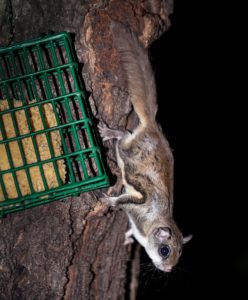 Southern Flying Squirrels (Glaucomys volans) usually pass underneath our radar, as the only nocturnal tree squirrel in our area. That’s right, a nocturnal squirrel! Flying squirrels don’t actually fly, the way that bats, birds, and insects can, but rather they glide using skin flaps between the front and back legs. They are incredibly adept at controlling the direction of their glide by adjusting these flaps. Each flap is called a patagium. Like other tree squirrels, flying squirrels eat mainly seeds and nuts, and supplement their diet with insects and small vertebrates occasionally. they nest or shelter in tree holes, like old woodpecker nests and natural hollows formed from the scars of fallen branches. They’re our smallest squirrels, with a body length of only about 5 inches.
Southern Flying Squirrels (Glaucomys volans) usually pass underneath our radar, as the only nocturnal tree squirrel in our area. That’s right, a nocturnal squirrel! Flying squirrels don’t actually fly, the way that bats, birds, and insects can, but rather they glide using skin flaps between the front and back legs. They are incredibly adept at controlling the direction of their glide by adjusting these flaps. Each flap is called a patagium. Like other tree squirrels, flying squirrels eat mainly seeds and nuts, and supplement their diet with insects and small vertebrates occasionally. they nest or shelter in tree holes, like old woodpecker nests and natural hollows formed from the scars of fallen branches. They’re our smallest squirrels, with a body length of only about 5 inches.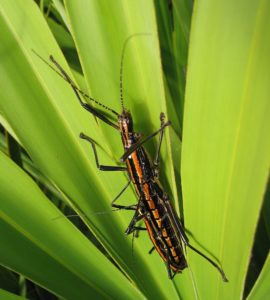
Two-striped Stick Insects (Anisomorpha bupestroides) leave marks on the Buttonbush leaves and other plants they eat from, all over the park. However, unless you uncover them under a rock or a log, you won’t see them during the daytime. If you find them, climbing through the bushes at night, you’re likely to notice that a smaller one appears to be riding a larger one. The males will actually attach themselves to the females while mating, for up to 2 weeks, to ensure that no other males mate with the female. This practice gives rise to the colloquial name in the South of “Devil Riders”. You should be careful when approaching these insects, as they are capable of releasing a caustic and toxic liquid from their back ends that may burn the skin and severely irritate the eyes. It’s best to admire them from a bit of a distance.
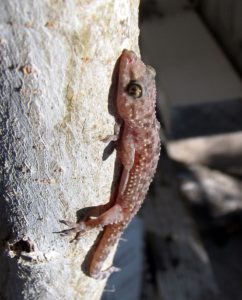 Mediterranean Geckos (Hemidactylus turcicus), as the name would suggest, are not from around here, but rather are originally from the Mediterranean coastal region of North Africa. Through shipping and international trade, they have been spread from there to coastal areas around the world. They have an especially vibrant population in the Houston-Galveston area of Texas, but can be found in larger cities around the state, like San Antonio, Austin, and Dallas, as well. They are our only nocturnal lizard. As with most geckos, they climb exceptionally well, and feed on insects and other invertebrates.
Mediterranean Geckos (Hemidactylus turcicus), as the name would suggest, are not from around here, but rather are originally from the Mediterranean coastal region of North Africa. Through shipping and international trade, they have been spread from there to coastal areas around the world. They have an especially vibrant population in the Houston-Galveston area of Texas, but can be found in larger cities around the state, like San Antonio, Austin, and Dallas, as well. They are our only nocturnal lizard. As with most geckos, they climb exceptionally well, and feed on insects and other invertebrates.
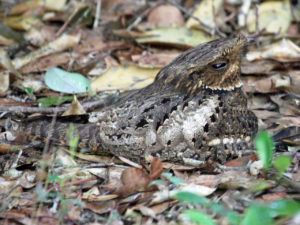
Chuck-Will’s-Widow (Antrostomus carolinensis) isn’t always found in the par all year round, but often stop over in the park during Spring and Fall Migration. These very well camouflaged birds, in the nightjar family, are heard more than seen. They are of course known for their loud CHUCK WILLS WIDOW call (listen here). These enigmatic birds fly through the night, feeding on flying insects by scooping them up in their huge mouths. They usually appear on the Western fence line of the park.
Thanks for joining us for another Wildlife Wednesday. Keeping in mind, that the park closes to the public at 9 PM, feel free to come out after dark sometime, with a flashlight, to check out our nocturnal wildlife for yourself. Also, you could join us for a group night hike, or with a group of 5 or more, schedule one with a staff naturalist for yourself.
Cheers, and see you soon!
Eric Duran
Staff Naturalist
photographs: Top Flying Squirrel by Ken Thomas | Wiki; Flying Squirrel by Judy Frederick | Flickr; Stick Insects by Bugenstien | Wiki; Gecko by Zoofari | Wiki; Chuck-will’s-widow by Dick Daniels | Wiki


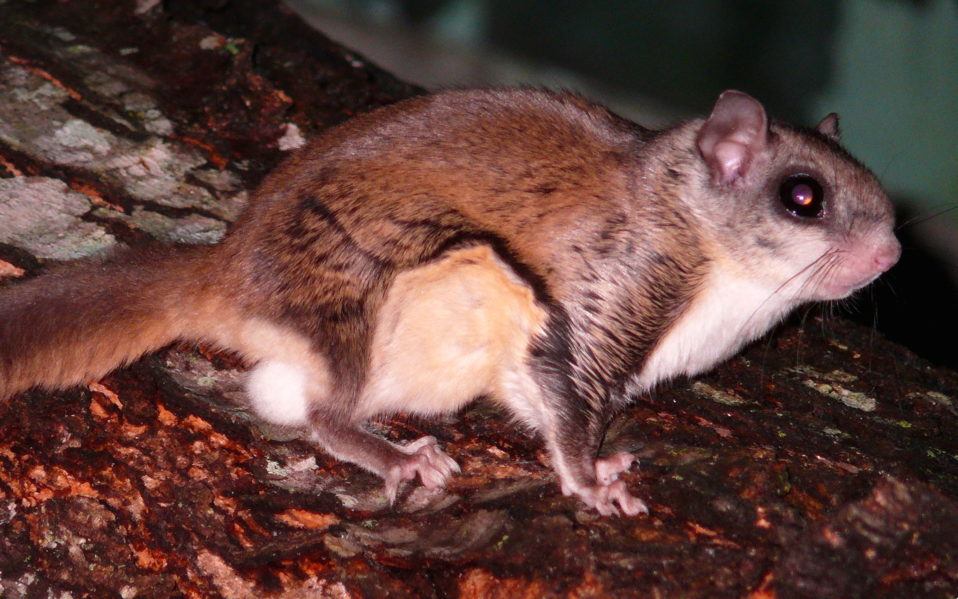
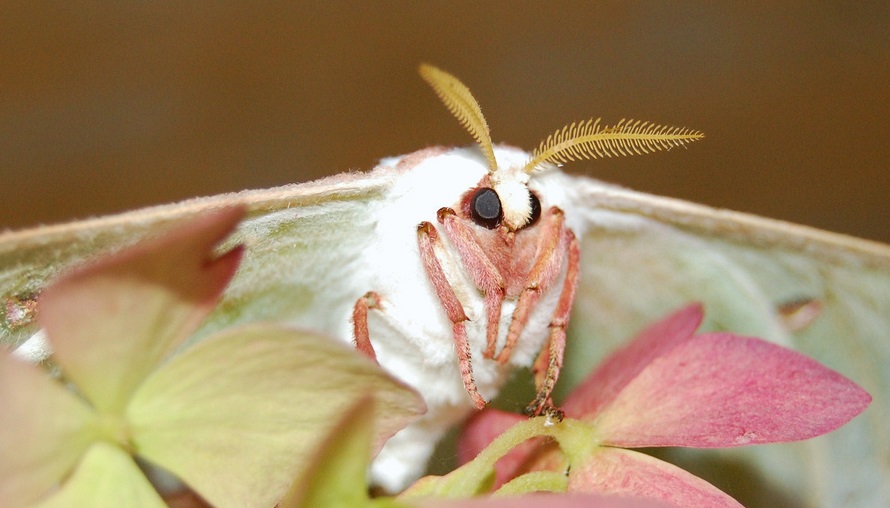
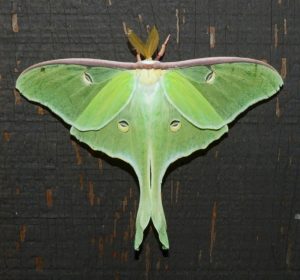 The Luna Moth (Actias luna) is a large nocturnal green moth in the silk moth family Saturniidae. As with most moths in this family, they do not have mouth parts, and thus do not feed as adults, having received all the nutrients they need to carry out their lives, as larvae (caterpillars). This is indeed a large moth, with a wingspan of up to 4.5 inches across. They have long tails on the hind-wings, which give them a swallowtail like appearance. The plump green caterpillars, with small soft spikes and red bumps, feed on a wide variety of tree leaves. They spin a silken cocoon in leaves, where they turn into pupae, and later emerge from, Spring through Summer in the Southern U.S.
The Luna Moth (Actias luna) is a large nocturnal green moth in the silk moth family Saturniidae. As with most moths in this family, they do not have mouth parts, and thus do not feed as adults, having received all the nutrients they need to carry out their lives, as larvae (caterpillars). This is indeed a large moth, with a wingspan of up to 4.5 inches across. They have long tails on the hind-wings, which give them a swallowtail like appearance. The plump green caterpillars, with small soft spikes and red bumps, feed on a wide variety of tree leaves. They spin a silken cocoon in leaves, where they turn into pupae, and later emerge from, Spring through Summer in the Southern U.S.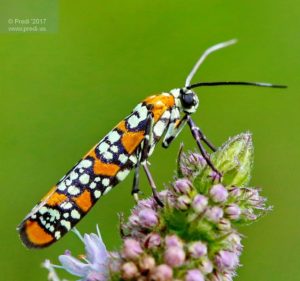
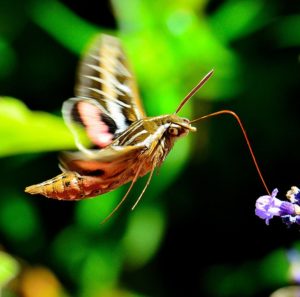
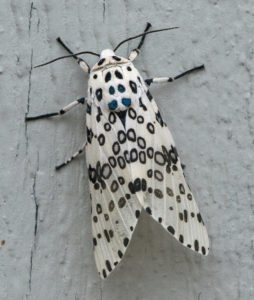

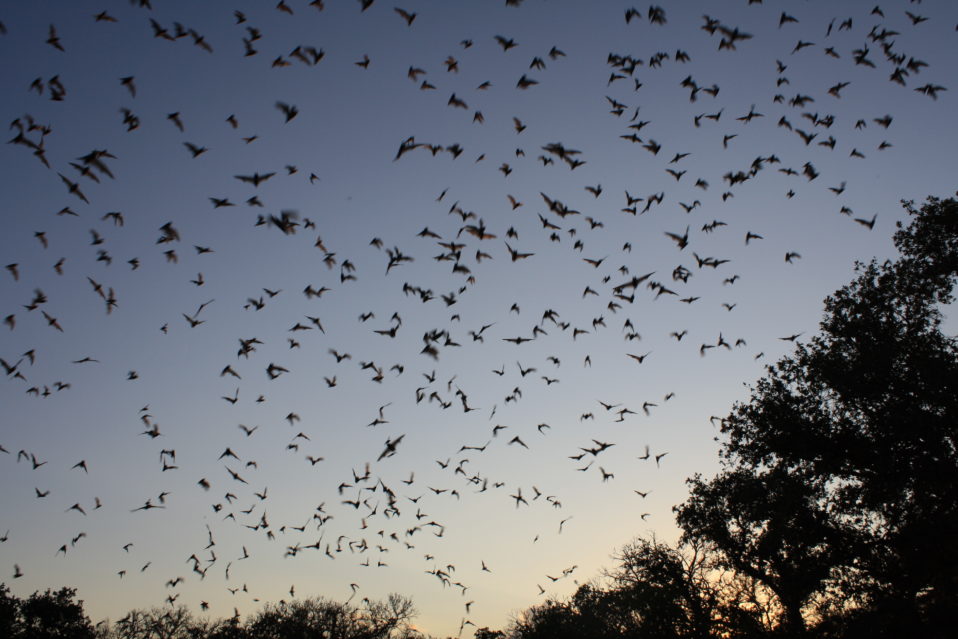
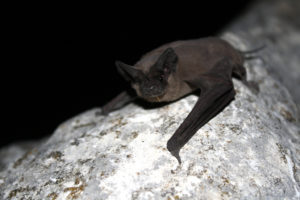


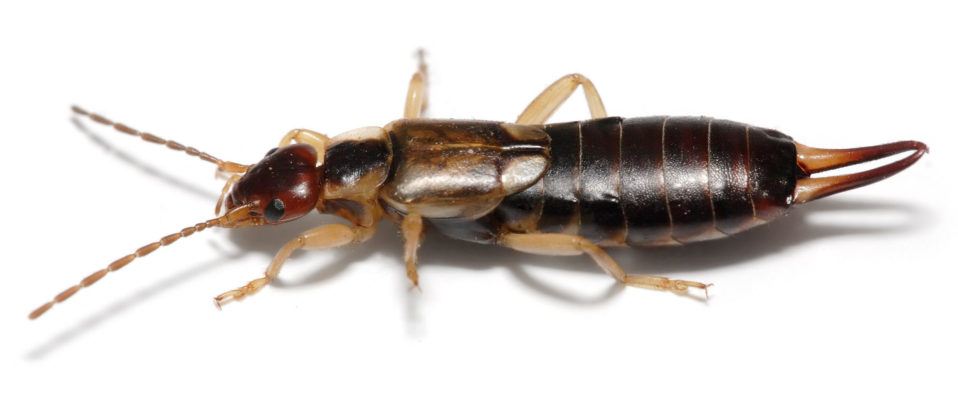
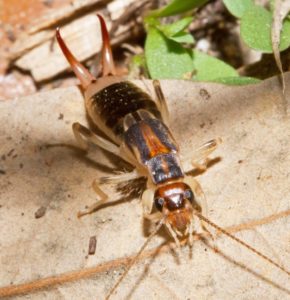 Earwigs (order Dermaptera) are very common little insects, but are somewhat misunderstood. The common name comes from an old and common belief that earwigs crawl into people’s ears… this is not the case! Earwigs live in a variety of natural settings, and occasionally wander into our houses. They are nocturnal and omnivorous (feeding on a wide variety of small invertebrates and plant matter). Because of the pincers on the tail end, they are often misidentified as centipedes, which are not insects, and have longer bodies and many more than 6 legs. The pincers are used to seize prey and defend themselves from each other and other small predators.
Earwigs (order Dermaptera) are very common little insects, but are somewhat misunderstood. The common name comes from an old and common belief that earwigs crawl into people’s ears… this is not the case! Earwigs live in a variety of natural settings, and occasionally wander into our houses. They are nocturnal and omnivorous (feeding on a wide variety of small invertebrates and plant matter). Because of the pincers on the tail end, they are often misidentified as centipedes, which are not insects, and have longer bodies and many more than 6 legs. The pincers are used to seize prey and defend themselves from each other and other small predators.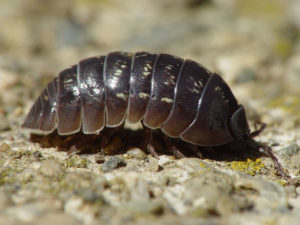
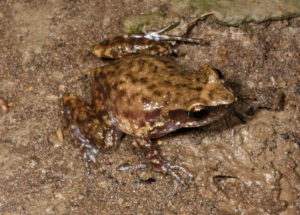
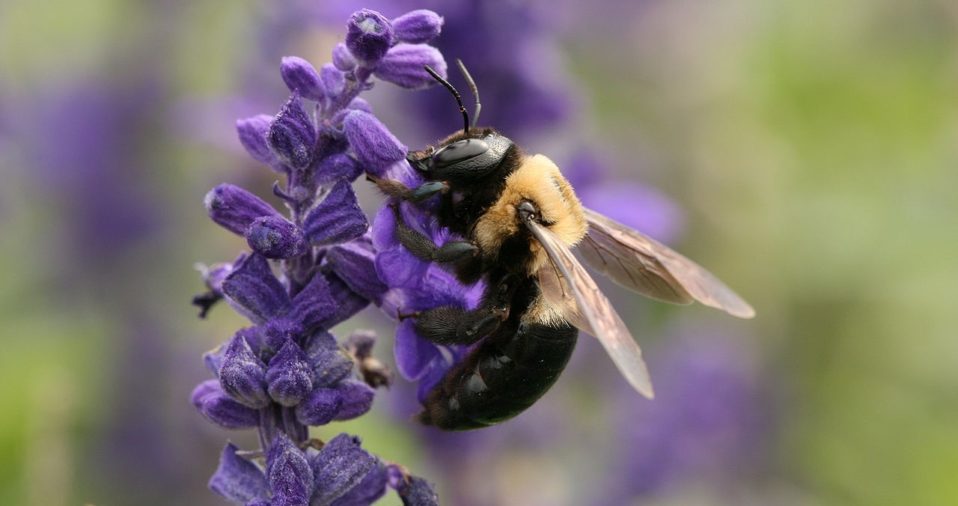
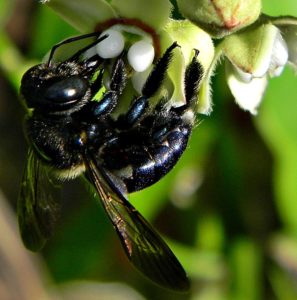

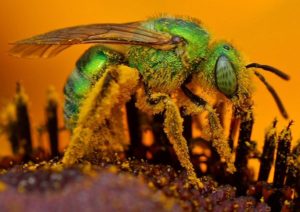

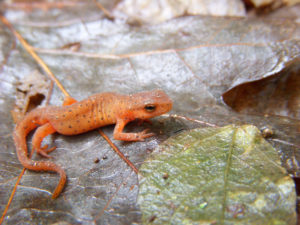
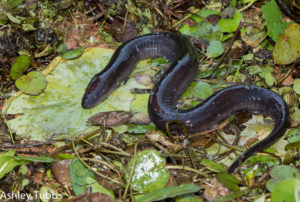
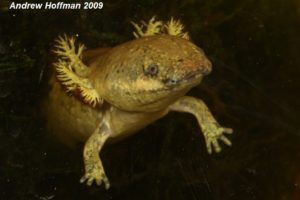 Another fully aquatic eel-like salamander is the Lesser Siren (Siren intermedia), which grow to about 18 inches in length. They have 2 tiny front legs, no back legs, and a flattened paddle-like tail. Sirens are easily identified by their feathery gray and red external gills, which extend from the sides of the head. Much like the amphiuma, they are very carnivorous and can deliver a painful and bloody bite. However, instead of a sharp bony ridge, they have a sharp horny beak-like structure. Also similar to amphiumas, they have extremely smooth slimy skin. Both sirens and amphiumas are believed to guard their eggs in mud nests under the water or in burrows next to their ponds, lakes, and bayous.
Another fully aquatic eel-like salamander is the Lesser Siren (Siren intermedia), which grow to about 18 inches in length. They have 2 tiny front legs, no back legs, and a flattened paddle-like tail. Sirens are easily identified by their feathery gray and red external gills, which extend from the sides of the head. Much like the amphiuma, they are very carnivorous and can deliver a painful and bloody bite. However, instead of a sharp bony ridge, they have a sharp horny beak-like structure. Also similar to amphiumas, they have extremely smooth slimy skin. Both sirens and amphiumas are believed to guard their eggs in mud nests under the water or in burrows next to their ponds, lakes, and bayous.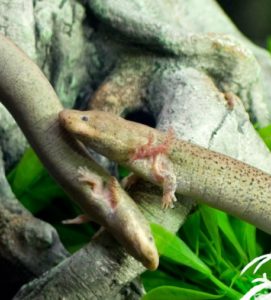
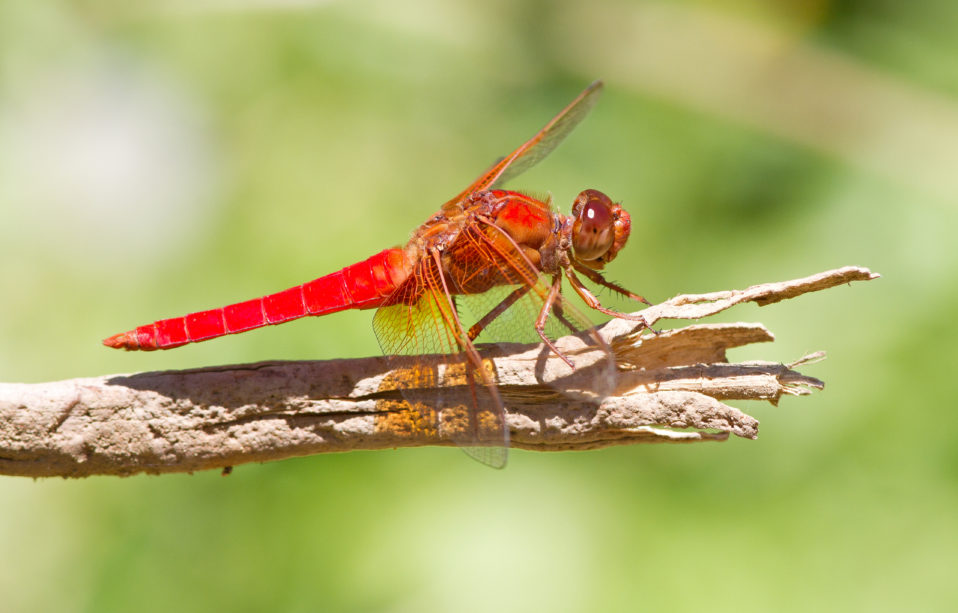
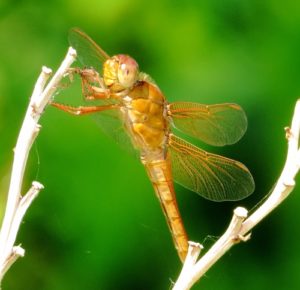 The
The 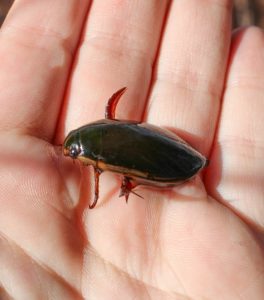
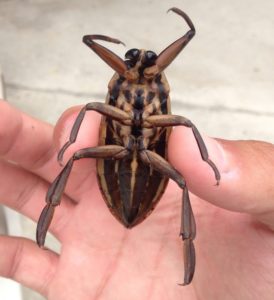 Sometimes called “Toe-biters”,
Sometimes called “Toe-biters”, 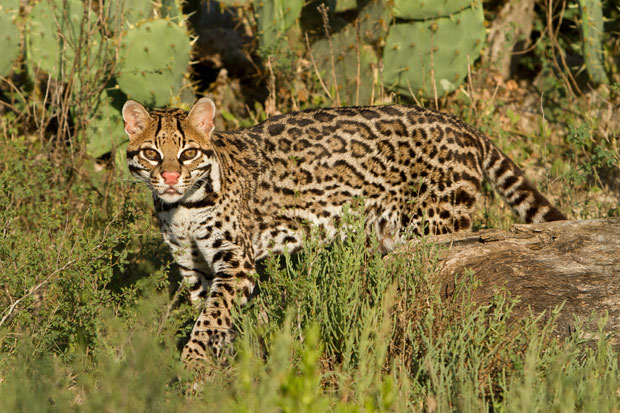
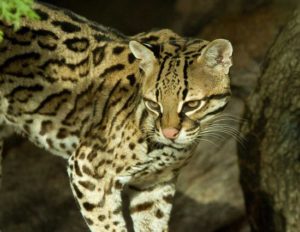 While most people think of Ocelots (Leopardus pardalis) as creatures of Central and South American rainforests, these medium sized predators actually inhabit a variety of habitats, including deserts and grasslands, and once roamed our prairies. Today we have an extremely small population of possibly around 50 in the Southern tip of Texas, but they once ranged up the Texas coast all the way to Easternmost Louisiana. These spotted cats were driven to extinction in the state through overhunting and destruction of habitat, but have been reestablished in in the Lower Rio Grande Valley through conservation efforts by landowners, environmental groups, and government agencies, like the U.S. Fish & Wildlife Service.
While most people think of Ocelots (Leopardus pardalis) as creatures of Central and South American rainforests, these medium sized predators actually inhabit a variety of habitats, including deserts and grasslands, and once roamed our prairies. Today we have an extremely small population of possibly around 50 in the Southern tip of Texas, but they once ranged up the Texas coast all the way to Easternmost Louisiana. These spotted cats were driven to extinction in the state through overhunting and destruction of habitat, but have been reestablished in in the Lower Rio Grande Valley through conservation efforts by landowners, environmental groups, and government agencies, like the U.S. Fish & Wildlife Service.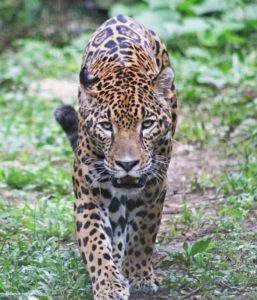
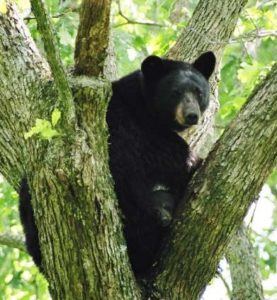 Louisiana Black Bears (
Louisiana Black Bears (
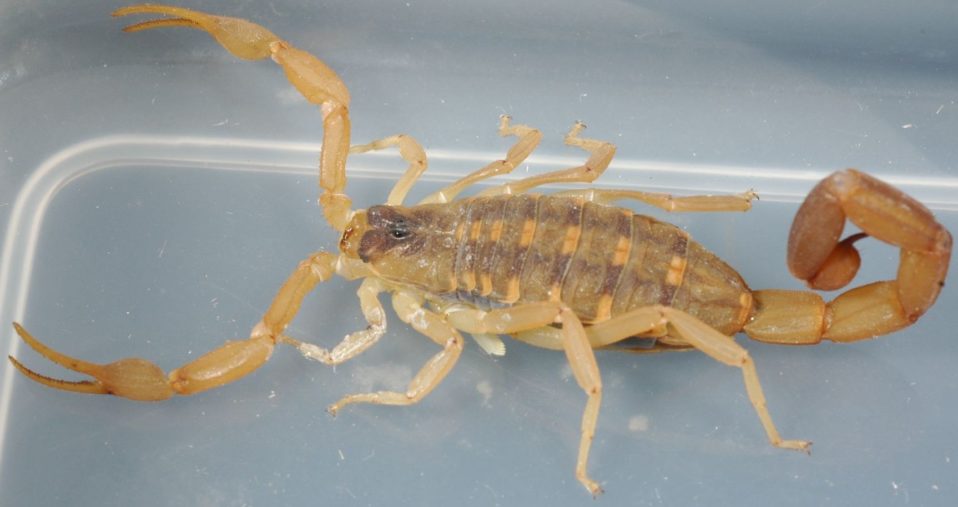
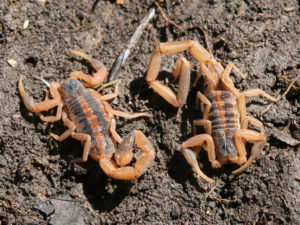 One of the most commonly encountered non-spider arachnids in this part of the state is the Striped Bark Scorpion (Centrutoides vittatus). This is a small scorpion, growing to only about 2.75 inches in total length. They may deliver a painful sting, though the venom is not usually injurious to humans, beyond the obvious pain and discomfort. As with all other scorpions, this species is carnivorous, seizing their prey with front pinching claws, and injecting the prey with venom from the tail stinger. They then spit out digestive juices onto the prey, and suck up the dissolving body of the prey. Maybe a bit gross, but its what they do!
One of the most commonly encountered non-spider arachnids in this part of the state is the Striped Bark Scorpion (Centrutoides vittatus). This is a small scorpion, growing to only about 2.75 inches in total length. They may deliver a painful sting, though the venom is not usually injurious to humans, beyond the obvious pain and discomfort. As with all other scorpions, this species is carnivorous, seizing their prey with front pinching claws, and injecting the prey with venom from the tail stinger. They then spit out digestive juices onto the prey, and suck up the dissolving body of the prey. Maybe a bit gross, but its what they do!
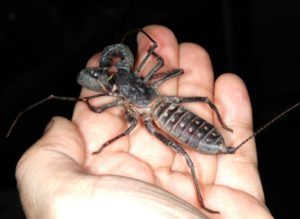 he 3rd animal we’ll look at this week is from a much lesser known group of arachnids called the “whip scorpions”, and here in the U.S. we call them Vinegaroons (
he 3rd animal we’ll look at this week is from a much lesser known group of arachnids called the “whip scorpions”, and here in the U.S. we call them Vinegaroons (


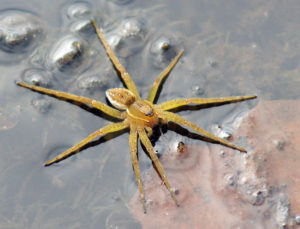 A really awesome spider, found only in the Cypress Pond at the South End of the park, is the Six-spotted Fishing Spider (Dolomedes triton), which is known for running across the surface of the water. These large leggy water walkers prey on a wide variety of aquatic creatures, like: minnows, tadpoles, aquatic insects, and even other spiders!
A really awesome spider, found only in the Cypress Pond at the South End of the park, is the Six-spotted Fishing Spider (Dolomedes triton), which is known for running across the surface of the water. These large leggy water walkers prey on a wide variety of aquatic creatures, like: minnows, tadpoles, aquatic insects, and even other spiders!